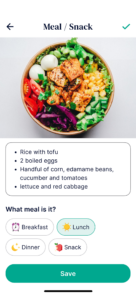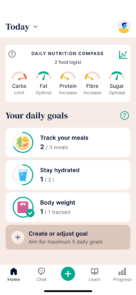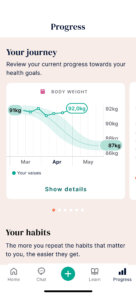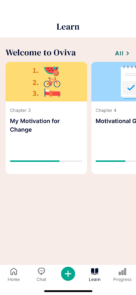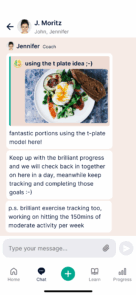
When is blood pressure too high?
High blood pressure means your heart is working harder than it should, putting strain on your arteries. Left unchecked, it can lead to serious health issues like heart disease.
One of the best ways to lower blood pressure is by losing weight. If you have a BMI over 35 and have struggled with weight loss, Oviva’s NHS-funded programme offers tailored support, weight loss medication, and sustainable strategies to help manage your health.
Key takeaways
- Blood pressure above 140/90 mmHg is typically classified as high, but normal ranges vary by factors like age and how it’s measured.
- High blood pressure raises the risk of heart disease and other health complications.
- Managing weight, diet, and lifestyle is key to preventing and treating hypertension. Oviva is here to help!
What is blood pressure, and how is it measured?
Blood pressure is the force of blood moving through your arteries as your heart pumps. It’s measured with two numbers, like 110/70 or 145/95, and classified as low, normal, elevated, or high.
High blood pressure is known as hypertension.
- Systolic (top number): Pressure when the heart pumps. High levels may indicate extra strain on your arteries.
- Diastolic (bottom number): Pressure when the heart rests. Consistently high levels can signal long-term blood vessel stress.
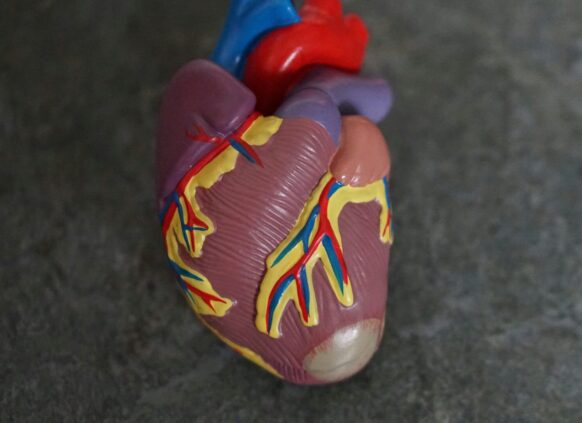
Blood pressure range chart
Blood pressure is measured with two numbers. In the UK, classifications vary based on age and how the reading is taken. This is because:
- Blood pressure naturally rises with age due to artery stiffening, so slightly higher readings are normal if you’re over 80.
- Readings may also be higher in medical settings due to stress or anxiety about seeing a doctor.
If a healthcare professional checks your blood pressure, they’ll classify it based on NHS guidelines:
| Under 80 years old | 80 years old and above | |
| High blood pressure | 140/90 or higher | 150/90 or higher |
| Low blood pressure | Lower than 90/60 | Lower than 90/60 |
If you’re having your blood pressure checked at home or away from a healthcare setting, you’ll usually be classified according to the following NHS guidelines:
| Under 80 years old | 80 years old and above | |
| High blood pressure | 135/85 or higher | 145/85 or higher |
| Low blood pressure | Lower than 90/60 | Lower than 90/60 |
If only the systolic value is high (e.g., 140/80 mmHg), this is called isolated systolic hypertension. If only the diastolic value is high, it’s called high diastolic blood pressure.
If you’re between 40 and 75, you should have your blood pressure checked at least once every five years by your GP or another healthcare provider.
Many pharmacies in the UK offer free blood pressure checks for people aged 40 and over.
Why are blood pressure levels important?
Blood pressure readings can tell you whether your levels are low, high, or within the normal range. It gives an indication of how hard your heart is working and the level of strain being placed on your arteries.
High blood pressure can damage blood vessels and increase the risk of:
- Heart disease & failure
- Atherosclerosis
- Arrhythmias
- Kidney failure
- Circulatory issues
Low blood pressure is generally not dangerous, but it can be a symptom of other issues, such as heart disease, kidney problems, or hormonal imbalances. Low blood pressure may cause symptoms like headaches, dizziness or fainting when standing up quickly.
Since hypertension often has no symptoms until complications arise, regular checks help catch it early and reduce long-term risks.
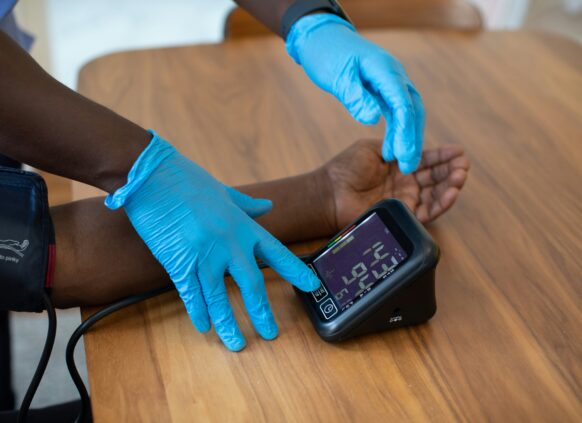
How to measure blood pressure correctly
For accurate readings:
- Measure at the same time daily, ideally before taking any medication.
- Sit in a quiet room and rest for five minutes beforehand.
- Ensure your arm is at heart level during the measurement.
- Take three readings, with one-minute breaks in between, and average the last two readings.
Keeping track of your blood pressure readings can help you notice changes and manage your health effectively. There are apps available that let you log these readings for easy tracking.
Oviva’s weight loss app includes blood pressure tracking as part of its personalised programme, alongside meal logging, personalised coaching, and other tools to support your weight loss journey.
When is blood pressure too high?
Your blood pressure is considered high if the top number (systolic) is over 140 mmHg or the bottom number (diastolic) is over 90 mmHg.
At home, readings above 135/85 mmHg can be a sign your blood pressure is getting high. If your readings stay high over time, it could mean you have high blood pressure (hypertension).

Can I reduce high blood pressure?
Yes, you can. If you’ve been told you have high blood pressure, making small changes to your lifestyle can help bring it down:
Lose weight
Losing excess weight can lower your blood pressure because your heart won’t have to work as hard to pump blood around your body.
Making small, sustainable changes to your lifestyle, like what you eat and how much you move, can help you lose weight safely and keep it off long-term.
Eat well
Eating fewer salty foods can help lower your blood pressure.
Try swapping salty snacks to lower-salt options like unsalted popcorn or unsalted nuts. Using herbs, spices, and lemon juice in your cooking can also help you cut down on salt while keeping meals tasty.
Eating more fruits and vegetables can also help lower blood pressure because they’re naturally low in salt and rich in nutrients.

Exercise more
Exercise can help reduce blood pressure by strengthening your heart, allowing it to pump more blood with less effort. This, in turn, reduces pressure on the blood vessels.
Reduce alcohol and avoid smoking
Cutting down on alcohol can help lower your blood pressure, as drinking too much affects how your blood vessels work.
Quitting smoking also makes a big difference, as nicotine raises your heart rate and blood pressure.
Reducing these habits, even gradually, can significantly improve your heart health.

Manage stress and sleep
We understand that managing stress and getting enough sleep can feel tough, especially if life is busy or stressful.
Even small improvements, like going to bed 15 minutes earlier, not looking at your phone for an hour before bed, or taking a few moments during the day to yourself, can help lower your stress levels and blood pressure.
If you can, aiming for 7–9 hours of sleep can also help your body handle stress better, but remember – every step counts.
Can high blood pressure be prevented?
Yes. Making small, realistic changes like eating well, reducing salt, drinking less alcohol, and being more active can help prevent and reduce high blood pressure.
Getting closer to a healthy weight can lower your risk, but even losing a small amount of weight can make a difference.
Oviva is your personalised NHS-funded weight loss programme, designed to fit around your life – without calorie counting or strict dieting.
If you have a BMI of 35 or higher, Oviva offers:
- A science-backed, personalised weight loss plan
- Flexible, ongoing support from dietitians, doctors, and health coaches
- Easy tracking of meals, activities, goals, and even blood pressure in the Oviva app
- The possibility of NHS-funded weight loss medication delivered directly to your door
It’s not about restrictive diets or spending hours in the gym – it’s about small, sustainable changes that help you lose weight safely and keep it off for good.
Ready to get started?

